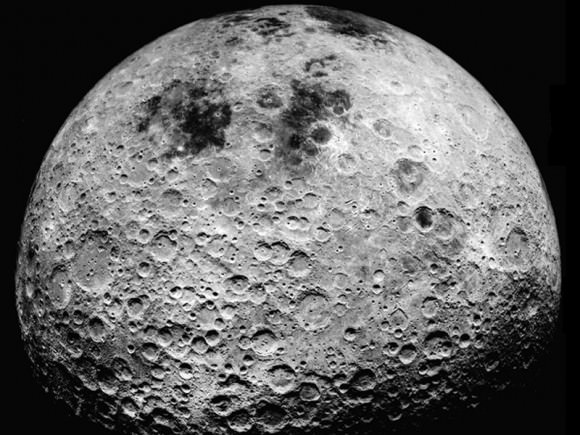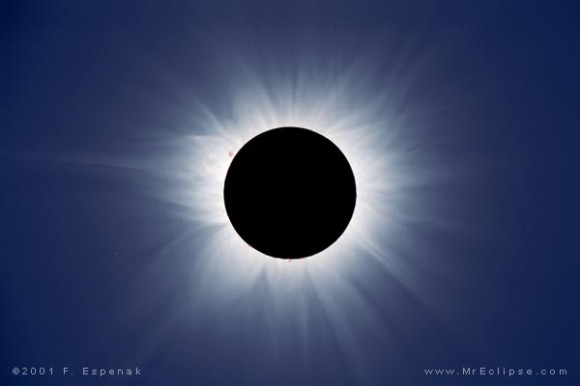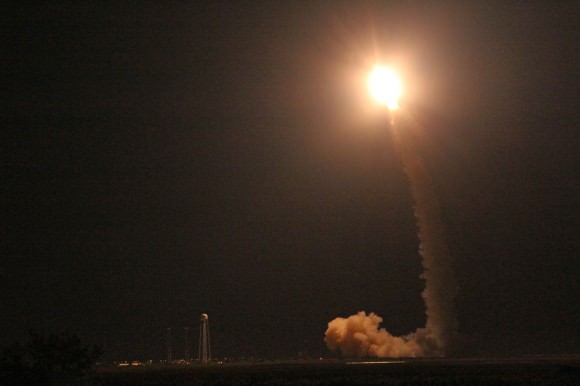Shining like a beacon in Earth’s sky is the Moon. We’ve seen so much of it in our lifetimes that it’s easy to take it for granted; even the human landings on the Moon in the 1960s and 1970s were eventually taken for granted by the public.
Fortunately for science, we haven’t stopped looking at the Moon in the decades after Neil Armstrong took his first step. Here are a few things to consider about Earth’s closest big neighbor.
1. A violent collision created the Moon.
The leading theory for how the Moon was created is this: an object about the size of Mars smashed into Earth early in our planet’s history, creating a bunch of debris that circled our planet. The debris came from both the Earth and the object, and over time the smaller bits stuck together and formed the Moon that we see today. This story was arrived at once the Apollo astronauts brought back a few hundred pounds of rock from their missions, by the way.
2. The Moon keeps the same side towards Earth.
It’s not because of shyness about its backside; it’s more a story about the Earth’s gravity. The Moon used to rotate at a different rate than it orbited around Earth, but over time our planet tugged at different parts of the Moon. Over time, more of the Moon’s mass shifted to our side of its body and its rotation became locked to its revolution. This phenomenon, by the way, is also present in other moons in the Solar System. Also interesting: this immense shift inside the Moon made the crust thinner on our side, which means there are more ancient lava seas on our side and more mountains on the other side.

3. Those solar eclipses we take for granted? They’re rare.
That’s because the Moon and the Sun happen to be approximately the same size in Earth’s sky. When the Moon’s orbit intersects the Sun’s (from Earth’s perspective), at times it can perfectly cover the star. When that happens, you’ll see the Sun’s corona — its superheated atmosphere — pop out around the perimeter. But we wouldn’t be able to see the corona if the Moon was much smaller, or much bigger.
4. And in a few million years, solar eclipses will become more difficult to achieve.
The Moon is very slowly drifting away from the Earth, which we found out after the Apollo astronauts left a laser reflector on the surface on which scientists could bounce beams. The drift is slow and gradual, at only about four centimeters (1.6 inches) a year. If this went on for long enough, the Moon and the Earth would become tidally locked to each other, in the sense that both the Earth and the Moon would keep the same faces towards each other! But the Sun will expand into a red giant and likely engulf our planet in five billion years, long before the tidal locking happens.

5. There’s water on the Moon.
Seems a huge surprise given the Moon has practically no atmosphere, but it’s true: there is frozen water lurking in permanently shadowed craters, and potentially below the soil itself. The water may have been blown in by the solar wind or deposited by comets, but scientists are still probing its origins. No one is sure if there is enough ice there to support a human colony, but the potential is exciting; it may mean we don’t have to truck this heavy but essential good from Earth.
6. The Moon has an atmosphere.
As we hinted at in the previous fact, the Moon has a very tenuous atmosphere called an exosphere. Measurements from NASA’s LADEE mission determined the exosphere is mostly made up of helium, neon and argon. The helium and neon come courtesy of the solar wind — that continuous stream of particles off the Sun that permeates through the solar system. The argon comes from the natural, radioactive decay of potassium in the Moon’s interior.

7. The Moon has dancing dust.
Especially around sunrise and sunset on the Moon, dust tends to hover above the surface. It might have something to do with the particles being electrically charged, or it might be some other phenomenon at work. The effect was noticed by some of the Apollo astronauts and also studied in detail during the LADEE mission.
8. There are bigger moons in the Solar System.
While we tend to think of the Moon as large — it’s little less than a third the diameter of Earth — there are bigger moons out there. The largest moon is actually Ganymede (around Jupiter), which is bigger than Mercury or Pluto. The other bigger ones, in order of size, are Titan (Saturn), Callisto (Jupiter) and Io (Jupiter). And to put this in perspective, the Moon isn’t all that big or massive because the astronauts walking on it experienced gravity only 17% of Earth’s.


RE: Item #4:
I must be missing something here…
Why would both the earth and the moon eventually become tidally locked? The further it moves away, the longer its orbital period becomes. To be always facing the same spot on earth, the moon would have to revolve around the earth every 24 hrs, which would mean it would be in a geosynchronous/geostationary orbit, correct?